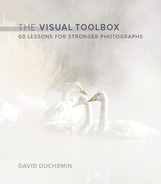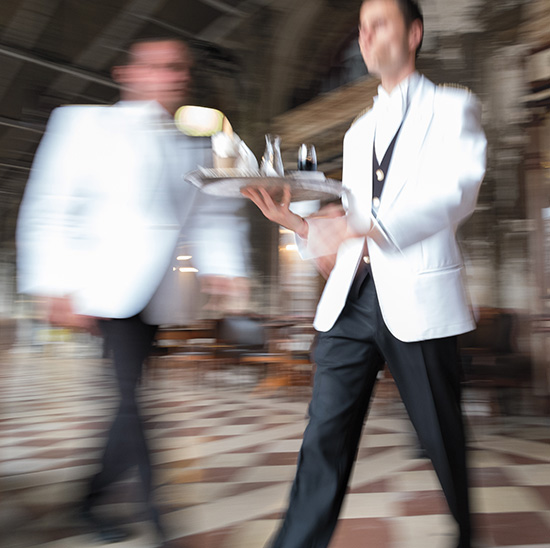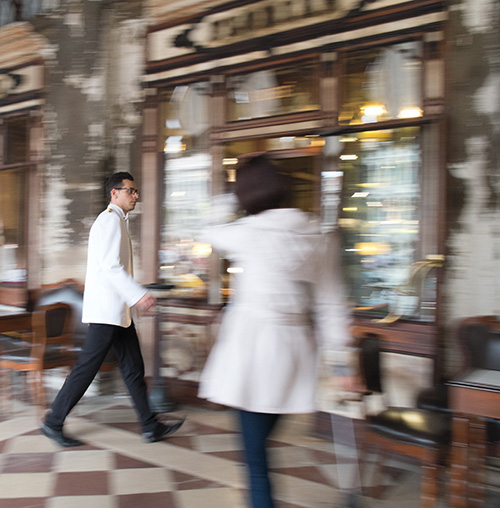Lesson 8. Learn to Pan
Once you’ve started playing with slower shutter speeds, it’s time to harness some of the possibilities. If the open shutter allows elements moving in relation to the camera to blur, then moving the camera at the same speed as a moving object will cause the moving subject to remain sharp while blurring the background. Getting good at panning isn’t easy, but it’s a great technique to have in your toolbox, as it lends greater energy to a scene.
Fuji XE-1, 18mm, 1/15 @ f/8, ISO 1600
Like the images in the previous lesson, these were made at 1/15 of a second, but this time the camera moved with the waiters, giving a sense of motion through a subtly different aesthetic.
Pulling it off consistently takes practice, but the basics are easy to understand:
• You want to choose a shutter speed appropriate to the speed of the moving subject. Panning with a walking person will require a much slower shutter, like 1/15 of a second, than panning with a moving car, which might be done best at 1/60 or 1/100 of a second.
• Brace your camera as securely as you can, holding it close to the body and tight to the eye.
• To pan, you move the camera with the subject, and though the natural inclination is to begin panning from a natural standing position, you end up a little twisted and unstable. If you know where your subject will be headed, it’s better to start facing that direction, then twist into the direction from which they will come. As you pan, moving at the hips, you will unwind into the most stable position.
“If you know where your subject will be headed, it’s better to start facing that direction, then twist into the direction from which they will come.”
• Focusing is usually pretty easy. The slower shutter speed will require a lower ISO and a tighter aperture. The tighter aperture will give you greater depth of field, which will help if you don’t quite nail the focus. And though you might not normally want that much depth of field, here it’s okay because all that background will be blurred into a streak of motion.
• Use high-speed burst mode. It’ll take more than one frame to get this right.
• Don’t get so caught up in this technique that you forget to compose. You’re creating an image about motion—it’s dynamic, so use a dynamic composition. Placing the subject almost anywhere other than in the middle is a good start.
• Practice, and don’t get discouraged. It takes a lot of work to find the right shutter speed, and even more to get the speed of your own motion to match the speed of your subject.


